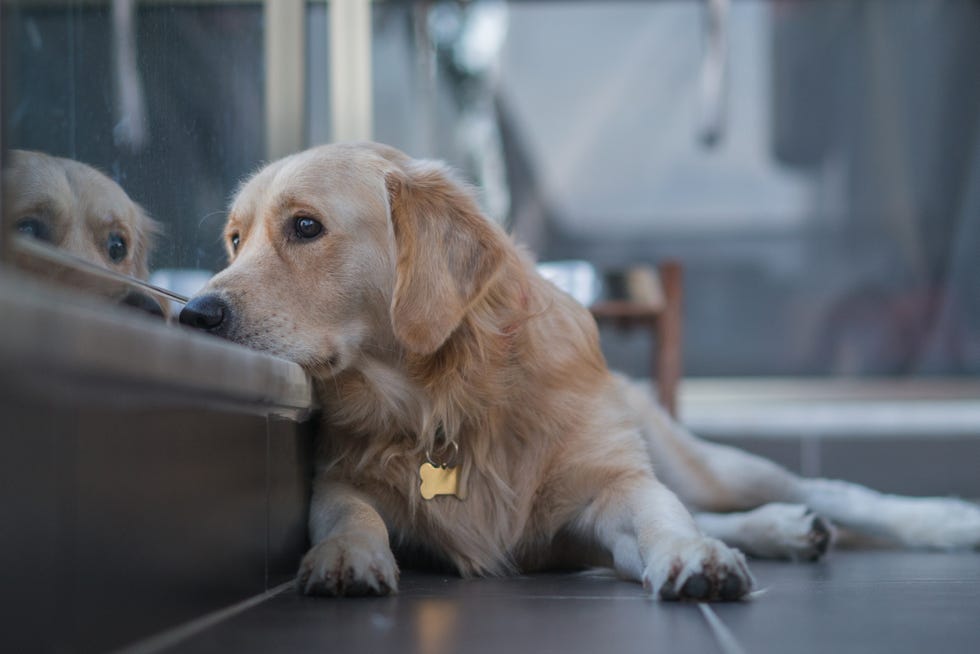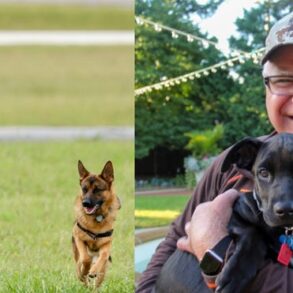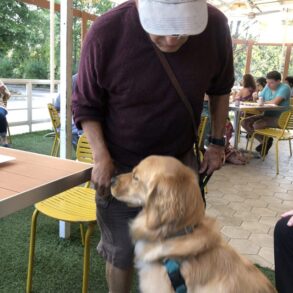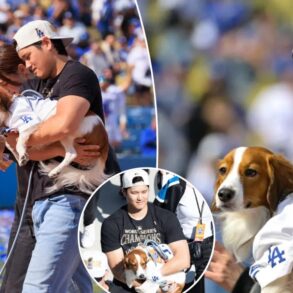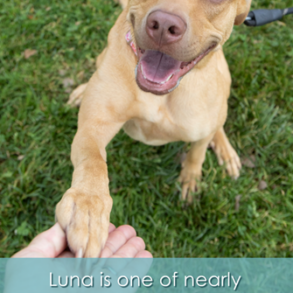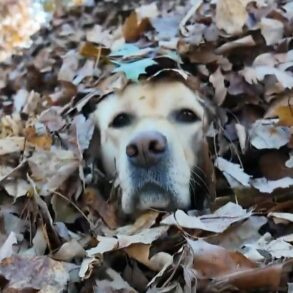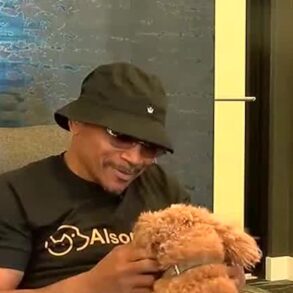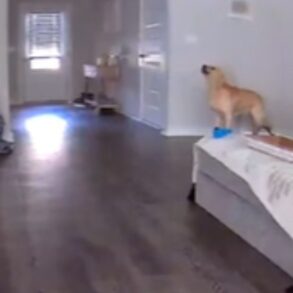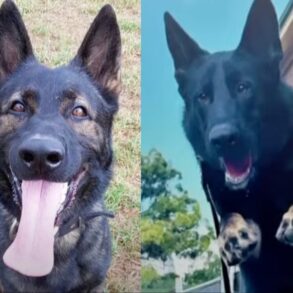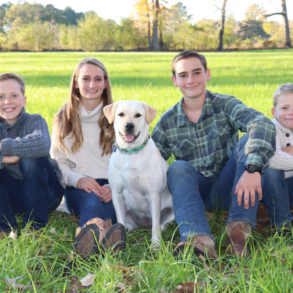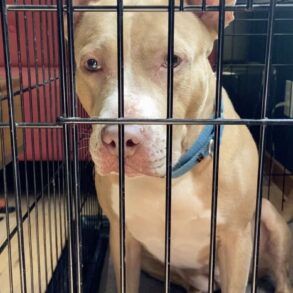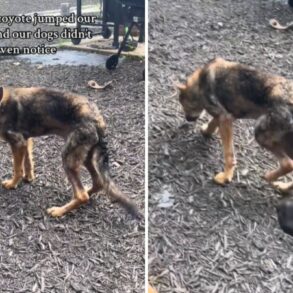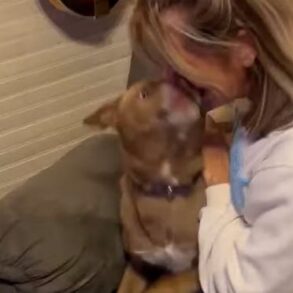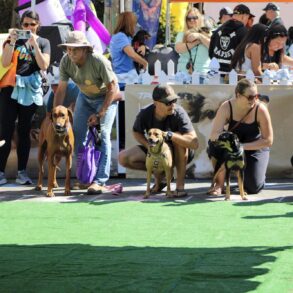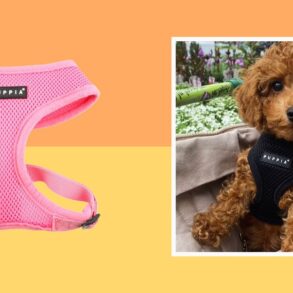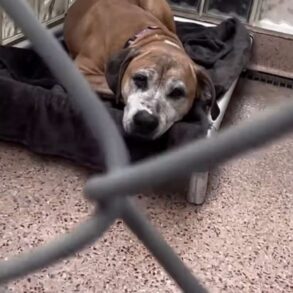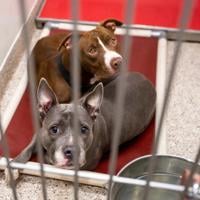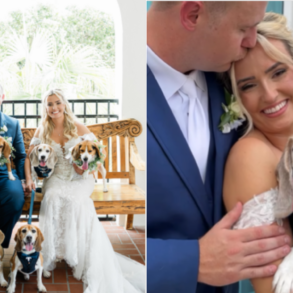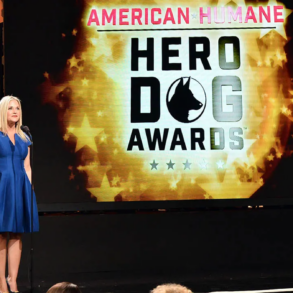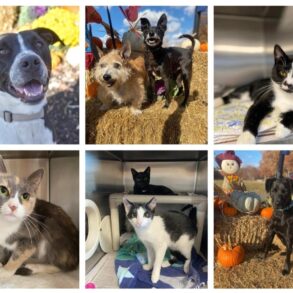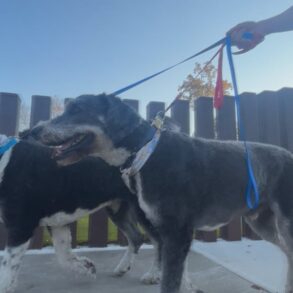Just like people, dogs have fears too, from vacuum cleaners and lawnmowers to fireworks and the dark.
While a dog can’t tell you what they’re scared of, they tend to express fear in several ways, including shaking, pacing, whining, barking, cowering and hiding.
Identifying what a dog fears can help owners better support their pets — whether it’s avoiding of the triggers or extra nurturing while they’re present.
“No matter what a dog may be fearful of, if you approach the situation slowly and in steps, you will often see bigger progress,” says dog behaviorist Cesar Milan, the Dog Whisperer and co-founder of Halo Collar.
But these fears aren’t just objects that you’ll find around the house. Read on for 13 surprising things you dog might be afraid of, as well as how to help them overcome them, according to experts…
Your energy
“Dogs feed off of a human’s energy,” Cesar says. This means that if you exhibit negative energy — fear, anger, annoyance — they will feel it and react accordingly.
“When you show them your calm, assertive energy and that you are in charge, most dogs will willingly follow and look to you for direction,” Cesar adds.
Unfamiliar people
“Dogs are often fearful of new people approaching who they aren’t familiar with,” Cesar says. To avoid an adverse reaction, Cesar says to exhibit positive body language toward the person to show your dog that they’re safe and can be trusted.
If your dog still regularly seems fearful of passing people, Certified Animal Trainer & Pet Lifestyle Expert Nicole Ellis, CPDT-KA, FFCP-T, says to consider their upbringing.
“Some dogs are fearful of unfamiliar people, whether due to lack of socialisation, negative past experiences, or natural wariness,” she explains.
Exploring the potential causes of their fear of strangers can help you better address and overcome it.
New surroundings
Just as unfamiliar people can trigger dogs, so can new surroundings.
“Often when dogs look at their surroundings, they get nervous,” Cesar says. “It’s best to create a distraction using the dog’s nose, rather than ears or eyes.”
For example, if you notice that your dog seems anxious when pulling into car park, capture their attention by giving them a treat. It will help them associate the place with a feeling of reward, rather than fear.
Thunderstorms
Like fireworks, thunderstorms can also agitate dogs. Nicole says this is because thunder, lightning, and heavy rain can feel sporadic and unpredictable. To familiarise your dog to these common sounds of nature, consider using a sound machine paired with the same firework treat strategy.
New family members
When you welcome a dog into your family, they get used to the people they’re frequently around.
“Introducing a new family member is a tough hurdle for many pet owners,” Cesar says. To ease your dog into the arrival of your new family member, Cesar says to bring an item that contains your baby’s scent from the hospital before bringing them home. “Have the dog sniff from a distance, while you are holding the item,” he says. “You also want to make sure that you introduce the dog and baby at a social distance outside. Distance means respect.” Over time, they’ll be able to get closer.
Smoke alarms
Smoke alarms fall into the same category of unpredictability. “Dogs are often afraid of smoke alarms due to the sudden, loud, and high-pitched noise these devices produce,” Nicole says.
“The high-pitched beep or screech of a smoke alarm, which is specifically designed to be piercing and attention-grabbing, can be extremely uncomfortable and even painful for dogs, and since smoke alarms go off suddenly and without warning, they can startle dogs and cause fear.”
Since it’s hard to know when a smoke alarm will go off, it’s best to have treats always within reach so you can distract your dog in the event of a panic-inducing alarm.
Falling
“Many dogs have a natural fear of falling, which is rooted in their instinct for self-preservation,” Nicole says.
Because of this fear, dogs often behave differently on surfaces where they feel they might slip and fall, she adds, noting that tile, hardwood, and laminate floors are common triggers. “Their paws lack the traction to confidently walk or run on these surfaces, which can make them anxious and fearful,” she explains.
Pro Tip: If you notice your dog has a fear of slippery surfaces — and especially if they seem uneasy at the vet — consider holding them during their check-ups and appointments. Nicole says that it could very well be that they’re uneasy standing on the metal table.
Stairs
Dogs are naturally accustomed to walking on flat ground, even if hills or inclines are present. So, jutted steps, can feel foreign to them. As such, stairs create a combined fear of uncertainty paired with the fear of falling. To help your dog overcome an aversion to stairs, be heavy-handed with the treats and verbal praise.
Being handled
Typically, dogs become accustomed to their caretakers. “Many dogs fear being touched in certain ways or groomed, such as nail trimming, ear cleaning, or baths, often due to past negative experiences or a lack of habituation,” Nicole says. The best way to help them overcome this fear is to gently expose them to being handled, with ample treats and praise in the process.
New crates
A crate can be a dog’s safe space. To ensure it feels like that to them, it’s important to make it comfortable and chosen — not a place of forced punishment. With this in mind, Cesar says to introduce the crate to your dog casually, so that they can explore it on their own. “You want them to feel comfortable,” he says. “You can also add a toy or blanket inside so it’s viewed as a place that is enjoyable.”
Travelling in the car
Cesar says that it’s common for dogs to be fearful of riding in the car. A combination of the motion, sounds, and scents, paired with the uncertainty of where they’re headed, can put them into overdrive. Cesar explains the best way to get them accustomed to the car is to regularly expose them — even if it’s just hopping inside for a sit down. “You can bring treats and toys to help make the car a positive place,” he adds.
Being left alone
A fear of abandonment isn’t exclusive to the human experience. “Many dogs have separation anxiety,” Cesar says. To help them overcome their fear, Cesar says to train them for separation. “You can play a game where they sit at a focal point while you walk away,” he says. “Upon return, you can offer treats and calmness to your dog.”
You’ll also want to make their time alone comfortable and fun. Turning on a soothing playlist or TV show can make alone time more palatable for your pet.
Lastly, be mindful of how you greet your dog when you return. If you act super excited to see them when you get back, they’ll become attached to that reaction and will get overly excited anytime you part ways. Instead, greet them calmly, without eye contact. While it might seem callous, Cesar says the approach can lead to a calmer dog overall.
Specific objects
This one’s a bit more abstract but entirely relatable. Since fear is subjective, some dogs are afraid of specific objects while others aren’t. “Certain objects like umbrellas, hats, bags, or even specific clothing items can trigger fear in dogs, especially if they are not accustomed to them or had a bad experience,” Nicole says. If you find that your dog freaks out over the sight or sound of a certain item (like a vacuum), use treats to positively reinforce good behavior around it.
This post was originally published on this site be sure to check out more of their content.



